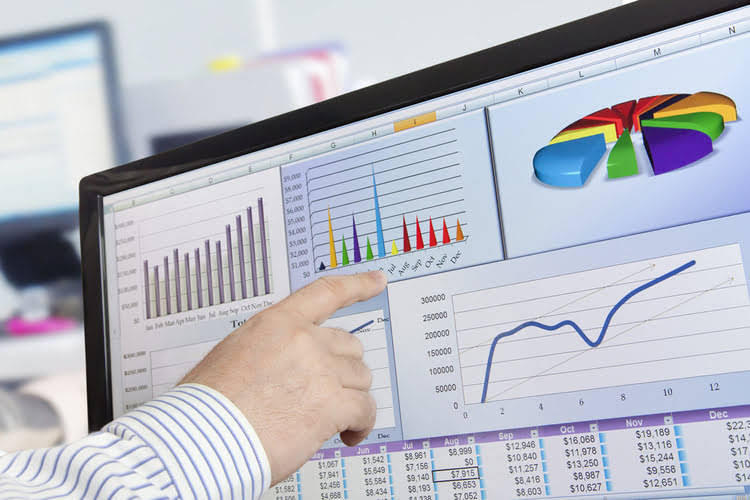
There’s no one-size-fits-all, and you may find yourself using different methods for different parts of your organization. In this guide we’ll look at the methods available to you, and some potential problems and useful benefits once you’re up and running. Double Entry Bookkeeping is here to provide you with free online information to help you learn and understand bookkeeping and introductory accounting. The use and preparation of the trading and profit and loss accounts are more fully discussed in our trading profit and loss account post. A financial professional will offer guidance based on the information provided and offer a no-obligation call to better understand your situation. Our writing and editorial staff are a team of experts holding advanced financial designations and have written for most major financial media publications.

The job order costing method calculates costs per manufacturing project or unit, making it useful for make-to-order manufacturers, construction manufacturers, and the like. Variable costs are expenses that a company bears proportional to its production volume. As production output increases, so will the variable costs, and vice versa. A good example would be the costs of packaging for finished goods but also utilities like heating and water, as well as some labor expenses, etc.
Manufacturing accounting software systems
The manufacturing account accumulates costs of production and is only used by a manufacturing business. The trading account is used to determine the gross profit on finished goods and is used by both trading and manufacturing businesses. The manufacturing account is prepared by closing the temporary cost accounts and adjusting the raw materials (RM) and the work in process (WIP) inventory accounts using a closing journal entry as shown below. A Manufacturing account can help businesses become more efficient by tracking production costs and inventory levels.
- Understanding manufacturing costing is like assembling a complex machine; every part must fit perfectly to work efficiently.
- This is typically achieved by implementing a double-entry system, which diligently tracks all financial transactions and safeguards against errors or discrepancies.
- Manufacturing costs can also be categorised as either variable costs or fixed costs.
- In manufacturing accounting, various financial aspects are addressed, including the cost of raw materials, labor, overhead expenses, and inventory valuation.
- A security guard is a fixed cost, as is the cost of the real estate and factory facility, insurance, and other costs required to run a manufacturing business.
- Manufacturers demand powerful, intuitive financial reporting with customizable dashboards to monitor costs, profitability, cash flow, and financial health in real-time.
A balanced approach to these cost categories is instrumental in determining the true cost of goods sold, allowing companies to set competitive prices and maintain profitability. Operating costs in manufacturing include things like travel expenses, office supplies, maintenance, salaries, utilities, taxes on production facilities, and more. It is based on calculating standard rates for the direct and indirect costs of products.
Best for Sustainable-Minded Small Manufacturers
Because that directly affects your tax liability, the IRS requires that you use specific methods to calculate both numbers. In the world of making things, keeping an eye on how much everything costs is key. Just like a chef needs to know the price of ingredients, including the cost of raw materials, to make a delicious and profitable meal, manufacturing companies need to be smart about their spending. To gain a deeper understanding of manufacturing costs and make informed decisions, the software should incorporate data analytics capabilities. This allows you to analyze data and derive insights into the overall financial position of your business processes. With numerous options available, selecting the right manufacturing accounting software package can be a daunting task.

Most manufacturing ERP providers require potential clients to request a custom quote and, so, do not offer pricing information online. You can allow customers and suppliers to link their systems to your SYSPRO ERP for a catered partnership experience. When you connect new modules or partner systems, the system’s artificial intelligence (AI) provides end-to-end visibility and insights for better collaboration. Cloud-based software will let you do this and will also produce a paper trail if required. With this knowledge you’ll be able to choose the right accounting system to help your manufacturing business grow. The credit entry to the manufacturing account clears the balance on the account and transfers the cost to the trading account of the business.
Activity-based costing (ABC)
Variable costs, on the other hand, can include assembly line workers whose roles change as you produce higher volumes. Manufacturing costs can also be categorised as either variable costs or fixed costs. The median pay for fleet managers without degrees is $64,600 while journeyman electricians make $62,600 on average, according to Payscale. Her work has been featured by business brands such as Adobe, WorkFusion, AT&T, SEMRush, Fit Small Business, USA Today Blueprint, Content Marketing Institute, Towards Data Science and Business2Community.
- Determining the right costing methods for manufacturing depends on the type of manufacturing processes utilized.
- Costs are assigned to inventory using either a standard costing, weighted-average cost, or cost layering methodology.
- These concepts are uncommon in other types of entities, or are handled at a more simplified level.
- Our writing and editorial staff are a team of experts holding advanced financial designations and have written for most major financial media publications.
- Ideally, data should move freely between production lines and the back office, meaning you have accurate real-time data.
This accounting method tracks individual items of inventory, which is useful if you can identify each item with, for example, a serial number or RFID tag. This can produce a higher degree of accuracy, but many manufacturers are unlikely to have items that have a unique identification. This is better for high-value items that need differentiation, rather than interchangeable items. Manufacturing overheads might include the costs for powering a factory’s equipment and personnel not directly involved in producing the product.
Move beyond ERP with Sage X3
Accounting for manufacturing companies becomes significantly more efficient and beneficial when these best practices are followed. Manufacturing accountants also keep an eye on other important manufacturing accounting areas of expenditure to ensure the budget is followed throughout the financial year. This depends on whether the labour requirements of a particular job change as you add more volume.
These predetermined “standards” are usually based on the company’s previous experiences and are routinely updated to reflect market fluctuations. This is a costing method that differs from job costing in that it incorporates more indirect costs, such as resource consumption. It can help you hone which products are profitable and spot opportunities to drive better results for your existing products.
